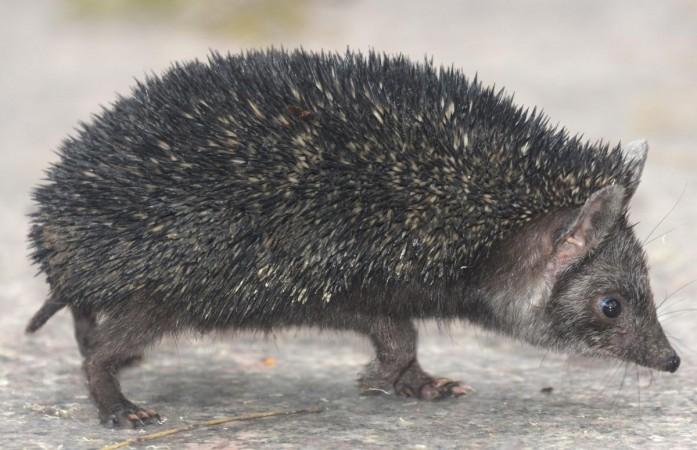
The first-ever authentic record of the Indian Long-eared Hedgehog was reported from the Nowshera area of the Rajouri-Poonch Wildlife Division in Jammu and Kashmir. The team headed by Amit Sharma Wildlife Warden Rajouri-Poonch captured the animal from the Nowshera belt and its identity was confirmed by Dr. Shyamkant S. Talmale, Scientist C, Zoological Survey of India.
A series of other procedures, like DNA analysis and morphometric studies, have to be carried out by Dr. Vineeta Sharma, Assistant Professor at Central University, for which the samples have been taken.
Sarvesh Rai, Principal Chief Conservator of Forests and Chief Wildlife Warden, congratulated the staff of the Rajouri-Poonch Wildlife Division for the confirmation of the first-ever authentic presence of the Indian Long-eared Hedgehog in the J&K UT and has directed the Wildlife Warden to carry out population estimation of the animal in that particular area and to survey the other area for its presence in collaboration with the universities and Wildlife Institute of India.
The sighting of the Indian Long-eared Hedgehog is indeed an addition to the long list of biodiversity in the J&K UT.

Hedgehog found in northern India, Pakistan
The Indian long-eared hedgehog (Hemiechinus collaris) is a captivating creature that roams the arid landscapes of northern India and Pakistan. Let's delve into the fascinating world of this spiky, elusive mammal.
The Indian long-eared hedgehog measures approximately 17 centimeters in length and weighs between 200 and 500 grams. Like most hedgehogs, it sports a coat of protective spines embedded in a muscular sheath. This unique sheath forms a bag-like structure, allowing the hedgehog to retreat inside for safety. Its large ears, eyes, and sensitive whiskers enhance its sensory perception. These adaptations help it navigate its nocturnal existence, aiding in finding food and potential mates
As an insectivore, the Indian long-eared hedgehog primarily feeds on small insects.
Interestingly, due to its arid desert habitat, it often derives most of its water from its food supply.
Burrows serve as its refuge during the day, where it rests and avoids the scorching sun.
The hedgehog's range spans across India (including Gujarat, Rajasthan, and Uttar Pradesh) and Pakistan (North West Frontier Province, Punjab, and Sindh). It endures extreme temperatures, facing intense heat in May and June and bone-chilling cold in December and January.
The Indian long-eared hedgehog follows a complex mating ritual. Males engage in a unique "dance" around females for several days before mating.
These courtship moves are both intriguing and essential for successful reproduction.
Fortunately, the Indian long-eared hedgehog is classified as "Least Concern" by the International Union for Conservation of Nature ( IUCN). However, habitat loss and climate change pose potential threats to its survival.
The Indian long-eared hedgehog remains a mysterious and resilient inhabitant of the desert night, its spines concealing secrets of survival and adaptation.














